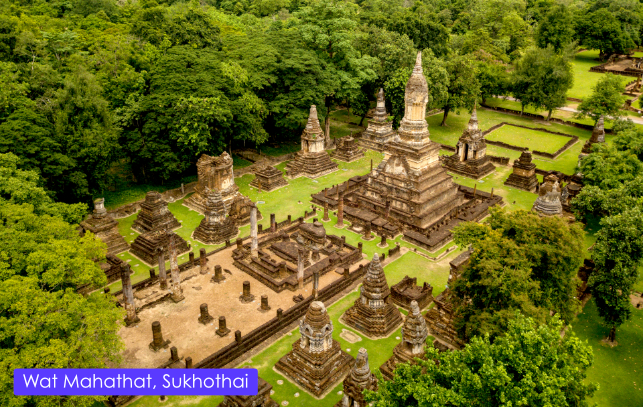Thailand’s
early architecture evolved from the influence of dominant Khmer Empire centred
on modern day Cambodia and likewise shares the awesome magnificence of the
structures associated with that culture. Among several important Khmer age
sites, Phimai and Phanom Rong are the finest.
In the thirteenth century, two Thai states emerged from a weakening Angkor, the
Lanna Kingdom of northern Thailand, and Sukhothai, further south. A century
later, the Thai Kingdom of Ayutthaya, close to modern day Bangkok, would emerge
and subsume Sukhothai, whilst Lanna would eventually fall to the Burmese.
Today these sites are preserved in three historical parks. Wiang Kum Kam close
to Chiang Mai is a complex of 42 excavated Lanna monuments. By far the most
visited ancient sites in Thailand, however, are the UNESCO World Heritage sites
of Sukhotai and Ayutthaya.
The sacking of Ayutthaya by the Burmese, in 1767, led to the relocation
downriver of the Capital to Thonburi, building a new palace adjacent to the
pre-existing Wat Arun, the Temple of the Dawn, which was at that time
refashioned into the form we see today.

Just across the water in what is now modern day Bangkok, Wat Pho, with its
famous reclining Buddha, was built to house sacred fragments rescued from
Ayutthaya, whilst further remains were incorporated into Wat Phra Kaeo and the
Grand Palace, the central historic structures of the city.
Another rescued remnant of Ayutthaya, thought to have originated in Sukhothai,
is the famous Golden Buddha, at three metres tall and weighing some five and a
half tonnes, the world’s largest solid gold statue, which was once covered in
plaster to conceal its staggering worth from the invaders, whereafter it was,
almost unbelievably, forgotten. When re-discovered in 1954, Bangkok's Wat
Traimit was adapted to house the statue.
In more recent times, a site often visited, particularly by British tourists,
is the notorious ‘Bridge on the River Kwai’, near Kanchanaburi, part of the
infamous death railway built during the Second World War, at a cost to life of
some 7,000 prisoners of war, brutalised by their Japanese captors.